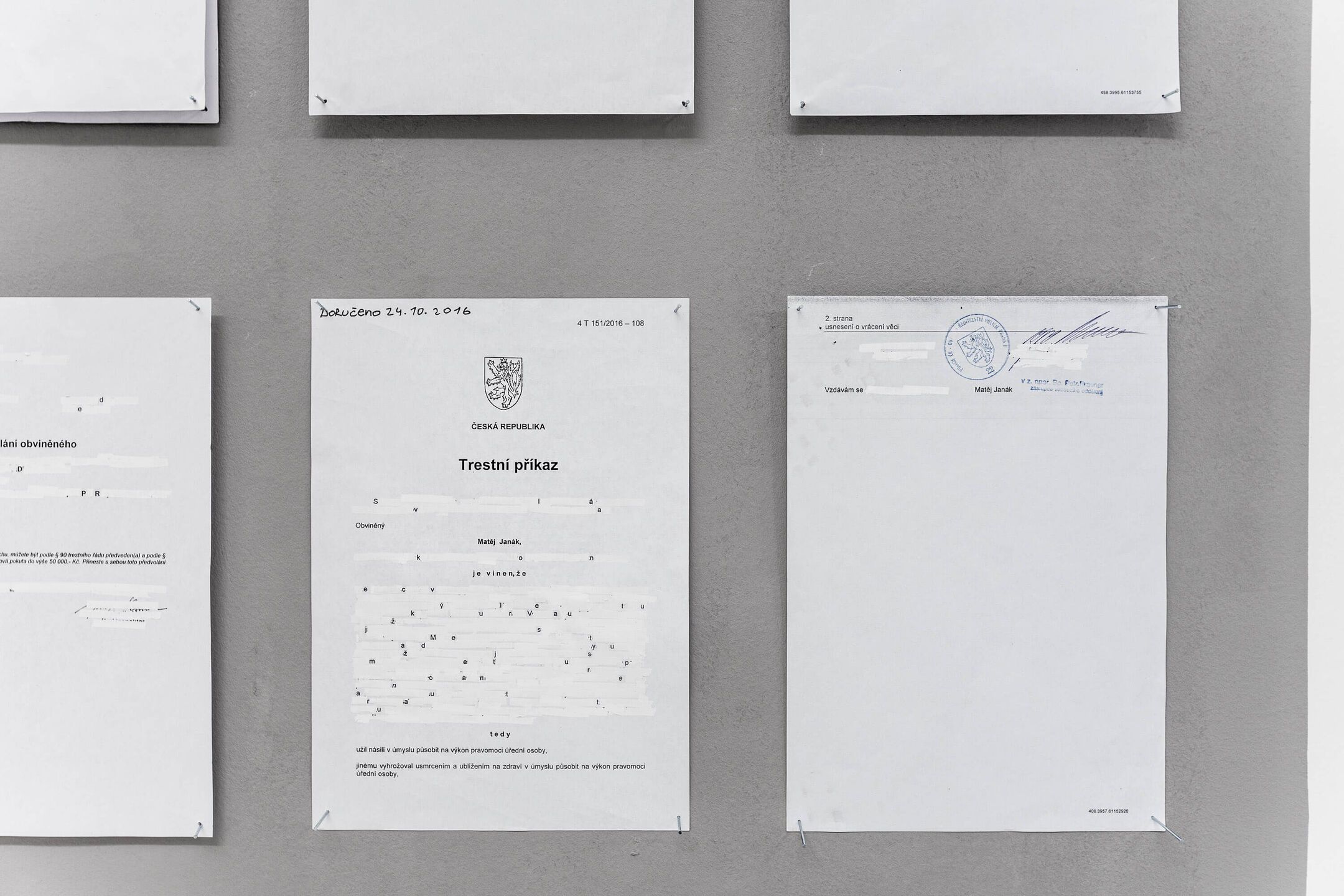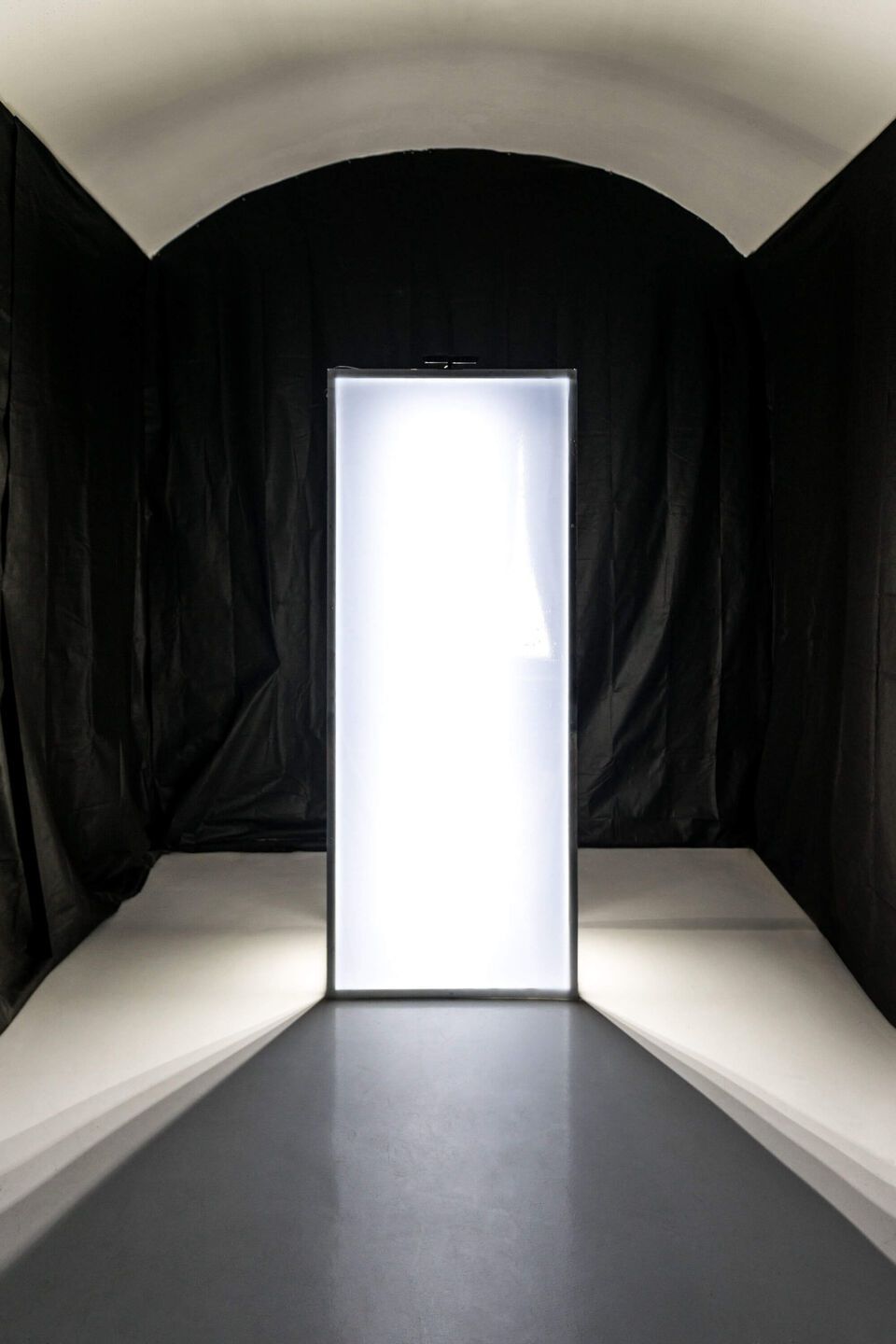






















Matěj Janák
Dead Inside Will Never Die
Matěj Janák (*1988) is familiar to Prague residents, even if they do not realise it. So far, he has been developing his fine art work mostly outside of gallery space. However no archetypal transplantation of street art into a gallery context has taken place here. For his first exhibition Dead Inside Will Never Die he created an intuitively narrative scenography of space that takes the spectator on a not one-way journey of their own existence.
“The first author’s exhibition of Matěj Janák (1988) is conceived rather like a journey. Thus it is not a coincidence that the loosely composed exposition begins and ends in two vaguely interconnected installations that are linked by a collection of technical paintings. Both of these stations – in the form of moderately defined environments – are tied to a personal mythology and relate to the process of self-cognition and self-determination. In this regard, Janák’s “subjective” strives to turn into objective and a personal experience discreetly tends to become a part of a generally shared collective conscience.
Furthermore, the visualised environment enables to actually take notice of a self-analysing situation embedded in reality exclusively on a mental level. If, when confronted with difficult moments in life, we use the metaphor “to go through”, then this is what the exhibition tries to translate from an abstract to a factual form. Individual artefacts, that cover a relatively wide range from reformulated censored official notices and subpoenas and mechanical optical grids to mirror technologies, represent different possibilities of communication based both on courses of thought and on physical experience.
The common denominators, not evident at first sight but possibly all the more important, then seem to be mainly the principles of unexpected error, of cause and effect, or of border crossing that most commonly result in change. Matěj Janák doesn’t want to create a precept-laden rationalised intellectual construct , on the contrary, his approach is intuitive, based on feelings not easily defined and on emotional states. The main focus, however, is the spectator. First his presence in the slightly contemplative, slightly interactive exposition gives the exhibition a meaning. For what is a journey good for if nobody sets out on it? And especially if the journey leads from itself back to itself.” – Radek Wohlmuth